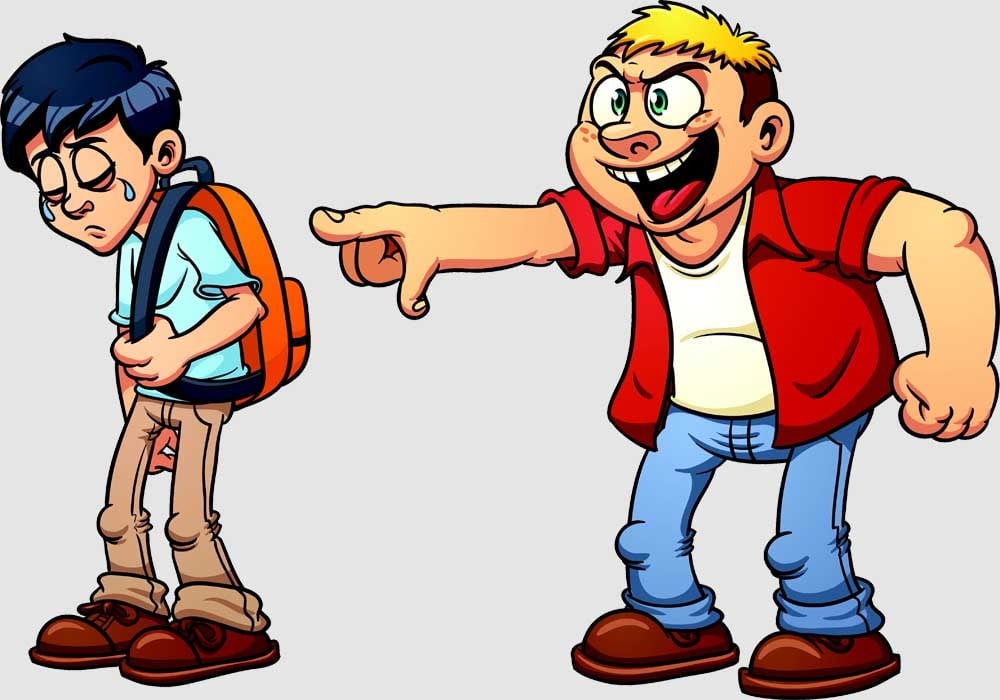
Bullying is caused by an imbalance of power. It is not limited to just children

"What if your trusted adult, the one who is responsible for standing up for you tells you it is your fault and they can’t help you and you should have sorted the matter by yourself?"
I could hear the pain in this 12-year-old’s voice as she asked me the final question at the end of my Anti-bullying workshop at a local convent school in Karachi. I wondered why parents would unwittingly hurt their children. I know they did it unknowingly but still…
I think back to my childhood, going to an all-girls school, spending an hour and half in the school bus each way. There was no concept of bullying back then but I cringe when I look back at some of the stunts we pulled in the school -- not letting little kids sit in our spots, calling them tattle tales anytime they complained to their parents.
Although there is more awareness now, the situation doesn’t seem to be any better in the schools. According to research, 26 per cent Pakistani kids report being bullied online, 53 per cent report being bullied offline, and 64 per cent report being bullied online or offline.
The children at the workshop were aware of the concept of bullying but were surprised to see that some of their actions such as consistently asking other students to not mingle or play with their group, or sit next to them could be considered as bullying.
So what is bullying? Bullying is "a form of repeated, persistent and aggressive behaviour directed at an individual or individuals that is intended to cause (or should be known to cause) fear and distress and/or harm to another person’s body, feelings, self-esteem, reputation or belongings."
The type of bullying committed by girls is very different from boys. The style of bullying used by boys is usually straightforward and physical in nature. They tend to hit, punch, or cause physical harm. Once you remove the child from the sphere of influence of the bully, things usually tend to improve. The type of bullying used by girls is usually social or emotional in nature such as "I will not be friends with you anymore" or "You can’t be friends with us," "You can either play with me or her," "You’re so ugly" or "Your dress sense is so bad." We sometimes refer to this group of bullies as "mean girls" (a reference to the 2004 Hollywood movie).
Girls, when they choose to, when they have not been taught better, can say things that hurt their peers. This type of bullying is emotional and psychological, and if prolonged can leave long-term scars.
What differentiates bullying from other aggressive acts is that the student who bullies intends to harm. There is more than one incident and an imbalance of power makes it hard for the child who’s being bullied to defend him or herself.
Power imbalance can be based on factors such as size, race, strength, age, intelligence, peer group power, gender, disability etc. The little kid asking to sit in the bus being repeatedly rebuffed by an older student; the disabled child, being repeatedly teased in the playground by class mates; the new girl being asked to sit separately from her class mates again and again; calling someone "Moti" or "Kaali" are all examples of acts that can turn into or be considered acts of bullying.
Bullying is caused by an imbalance of power. It is not limited to just children. Adults face bullying, too. Children entering a new school have less power than the established (senior) students. Popular girls and boys have more power than less popular ones. A rich landlord or politician has more power than a poor farmer. Students who face bullying can overcome this lack of power by speaking to a trusted adult such as a teacher or a parent.
Parents, if you are the trusted adult and tell the child to solve his or her problems, just imagine how lonely and depressed your child will feel! Please hear the indirect cry for help and be there for them! Bullying is the leading cause of childhood and youth suicides as well as school shootings in North America. Let’s not make it a trend in our part of the world and let’s work to keep our children safe.